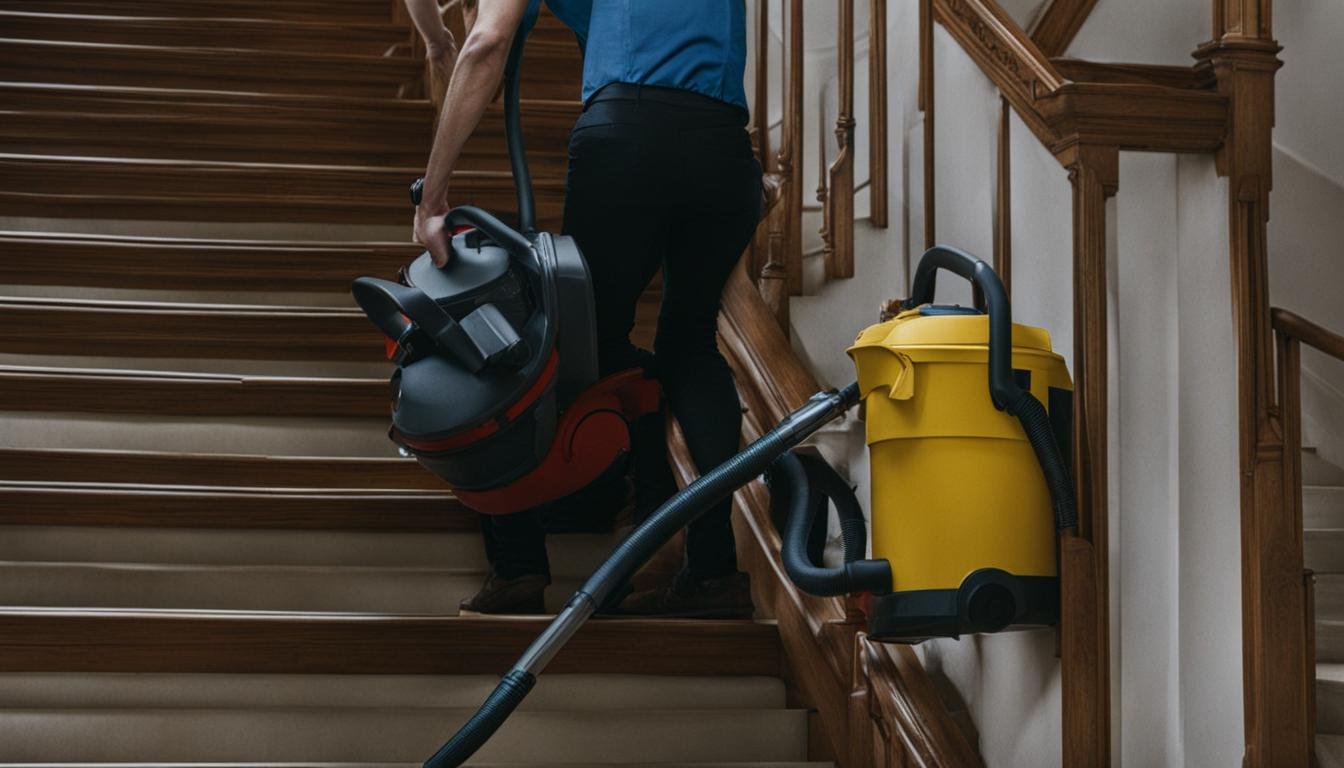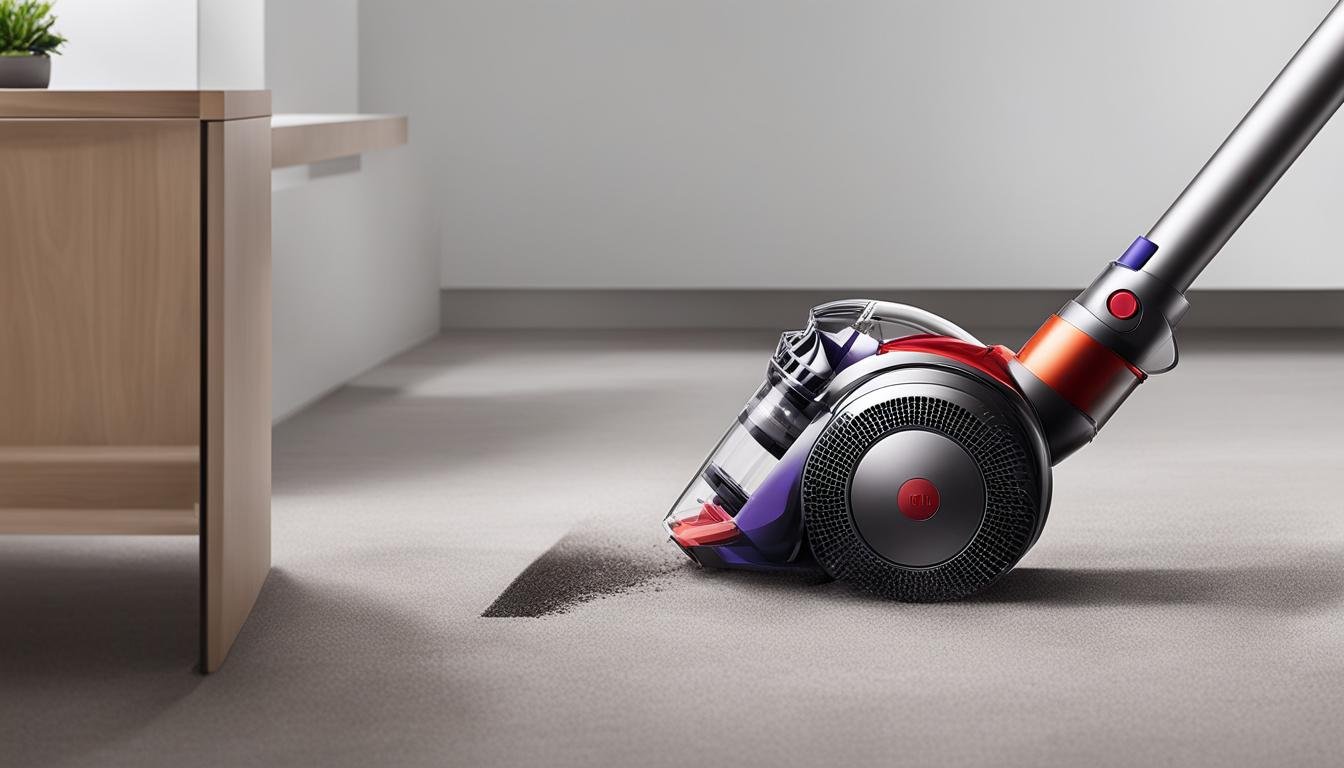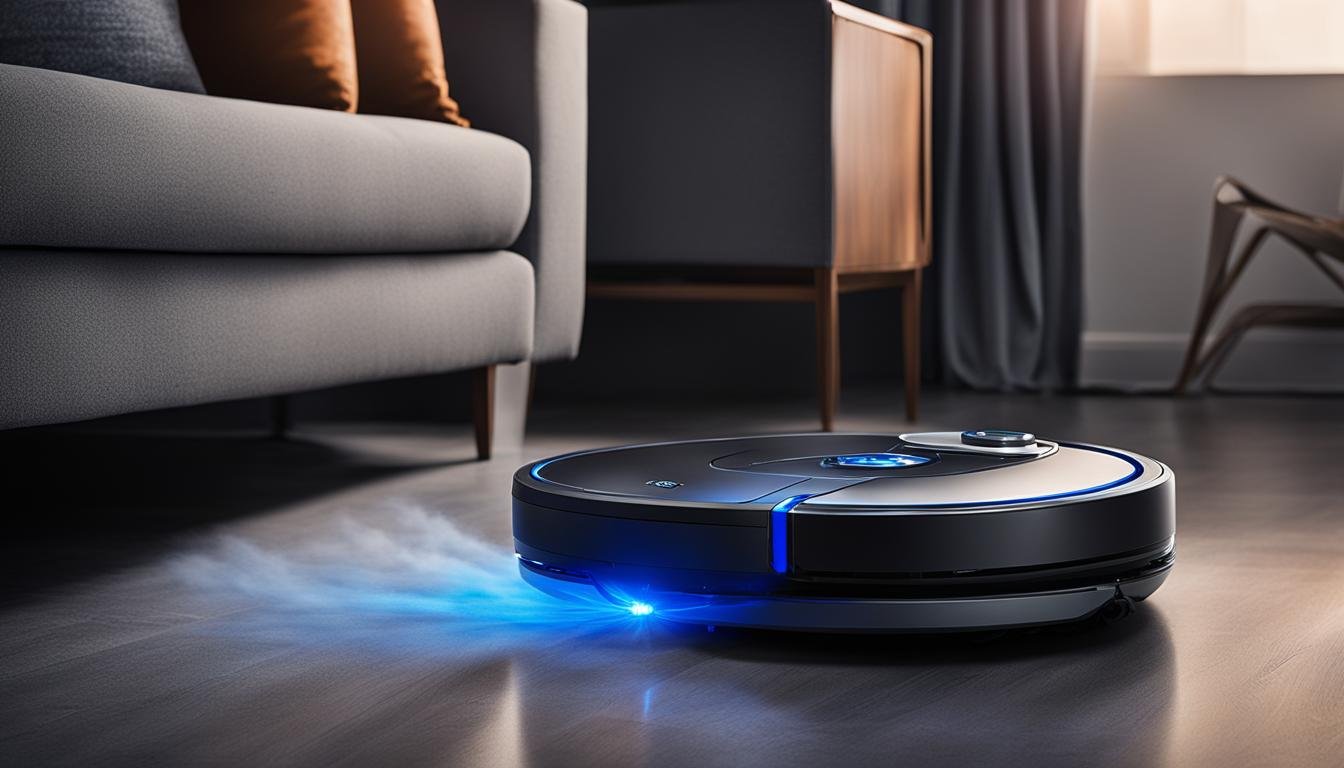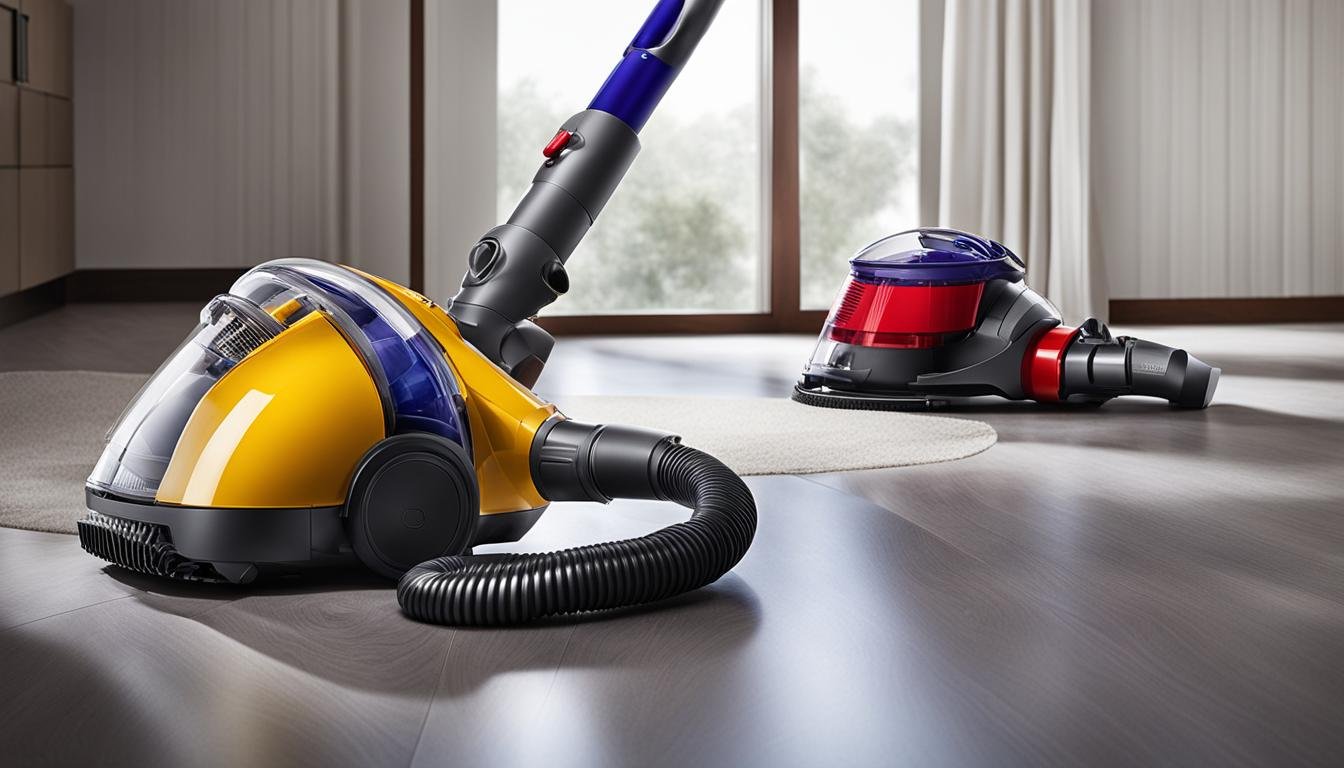Hi there! Have you ever found yourself struggling to carry a heavy vacuum cleaner up the stairs or across your home? If so, you’re not alone. Many of us have encountered this common challenge when it comes to household cleaning equipment. But what if there was a solution that could make your life easier?
Imagine having a helping hand to assist you in carrying your vacuum cleaner effortlessly, allowing you to navigate through your home without any strain or difficulty. Whether it’s a bulky and heavy vacuum or a cleaning tool that requires a little extra lifting aid, there are options available that can provide the support you need.
So, can you help me carry this vacuum cleaner? The answer is a resounding “yes!” With the advancements in technology and the evolution of robotics, there are innovative solutions that can make carrying household items a breeze.
Key Takeaways:
- Vacuum cleaner carrying assistance options can alleviate the strain and difficulty of moving heavy cleaning equipment.
- The evolution of robotics has introduced new ways to support and assist with carrying household items.
- Advancements in technology have made it possible to have a lifting aid for vacuum cleaners and other cleaning tools.
- Robots can provide valuable support in moving and carrying heavy or bulky objects, making cleaning tasks more manageable.
- Exploring the possibilities of assistance in carrying household items can lead to a more efficient and stress-free cleaning experience.
The Evolution of Robotics and its Impact on Industries
Robotics has undergone a remarkable evolution over the years, making a profound impact on various industries. From the early conceptualization of robots by Karel Capek to the development of real robots by engineers Joseph F. Engelberger and George C. Devol, the field of robotics has come a long way.
The initial robots, such as the Unimate, were primarily used in industrial settings. Companies like General Motors quickly recognized the efficiency and cost-saving benefits that robots provided. These early robots revolutionized industrial automation, allowing for tasks that were previously labor-intensive or hazardous to be completed with ease.
As technology advanced, industrial robots became more sophisticated, leading to increased efficiency and productivity in manufacturing processes worldwide. They are now extensively utilized in industries such as automotive, electronics, and pharmaceuticals, to name just a few. Robots have proven to be invaluable in increasing efficiency and precision while reducing errors and waste.
One of the key advantages of incorporating robots into industries is the significant cost savings they offer. By automating manual tasks, companies can reduce labor costs and improve overall profitability. Moreover, robots can work continuously and consistently without the need for breaks, resulting in higher levels of productivity.
According to a study by the International Federation of Robotics, the use of robots in manufacturing can lead to cost savings of up to 16%.
The impact of robotics on industries goes beyond efficiency and cost savings. These advanced machines have also created new job opportunities in robotics design, development, and production. Skilled professionals are needed to create and maintain robots, opening up a whole new sector within the workforce.
“The integration of robots in our manufacturing processes has transformed the way we operate. Not only have we improved productivity, but we have also created job opportunities for engineers and technicians in the robotics field.” – John Thompson, CEO of Thompson Manufacturing Inc.
The Future of Robotics
The evolution of robotics shows no signs of slowing down. As technology continues to advance, we can expect robots to become even more versatile and capable of performing complex tasks. From healthcare to logistics to space exploration, robots will play an increasingly vital role in various domains.
| Benefits of Robotics in Industries | |
|---|---|
| Increased efficiency and productivity | Cost savings through automation |
| Precision and accuracy in tasks | Reduction in errors and waste |
| CreatioFabs/n of new job opportunities | Improved workplace safety |
The use of robots in industries has transformed the way we work, enhancing efficiency, reducing costs, and improving safety. With the continued innovation and development in robotics, we can look forward to a future where robots become indispensable partners in various industries.
Robots in Dangerous Situations and Exploration
Robots have proven to be invaluable in various dangerous situations, offering a solution where human involvement may be risky or even life-threatening. One notable application is in bomb disposal, where robots are employed to investigate and safely dispose of potentially explosive devices. By using robots in this scenario, experts can remotely control the machines, reducing human exposure to danger and minimizing the risk of accidents.
In addition to bomb disposal, robots have also made significant contributions in nuclear power plants. In these facilities, robots are instrumental in assessing accidents or performing tasks that may expose humans to radiation. By utilizing robots, operators can ensure thorough inspections and maintenance without jeopardizing the safety and well-being of workers.
Furthermore, robots have played a crucial role in exploration, particularly in environments where humans cannot safely venture. For instance, in active volcanoes, robots have been used to collect samples and gather vital data that would otherwise be inaccessible. By sending robots to these treacherous locations, scientists can gain insights into the inner workings of volcanic activity, contributing to our understanding of these natural phenomena.
“Robots have drastically changed the way we approach dangerous situations and exploration. Their ability to navigate hazardous environments and perform complex tasks has opened up new possibilities for scientific research and human safety.” – Dr. Emily Johnson, Robotics Expert
One of the most remarkable examples of robotic exploration is the use of robotic rovers on Mars. Since the Mars Exploration Rover mission in 2004, robotic rovers have been tirelessly exploring the Martian surface, capturing images, collecting samples, and conducting scientific experiments. These rovers, including the well-known Spirit and Opportunity, have provided invaluable data and insights about Mars, paving the way for future manned missions to the red planet.
Robots continue to push boundaries and redefine what is possible in dangerous situations and exploration. From bomb disposal to nuclear power plants, and from volcanic expeditions to space exploration, robots are revolutionizing these fields, enabling us to go beyond our human limitations and expand our knowledge of the world around us.

In Conclusion
In conclusion, the assistance provided in carrying a vacuum cleaner can be invaluable, especially when dealing with heavy or bulky equipment. Whether it’s a robot or a helpful friend, having support in moving cleaning tools can make the task much easier and more efficient.
The evolution of robotics has had a profound impact on various industries, revolutionizing the way we work and increasing efficiency. Through automation, robots have enabled companies to save costs and improve productivity. While some manual labor jobs have been replaced by robots, the advancement of robotics has also created new opportunities in the field.
In addition to their impact on industries, robots have become invaluable in dangerous situations. From bomb disposal to nuclear power plant accidents, robots are able to perform tasks that would put human lives at risk. Their ability to navigate hazardous environments and handle potentially dangerous materials has undoubtedly saved lives and mitigated risks.
Looking to the future of robotics, we can expect these technological advancements to continue playing a crucial role in various fields. From space exploration to healthcare, the potential for robotics is endless. As technology continues to evolve, so will the capabilities of robots, opening up new possibilities for innovation and progress.
FAQ
Can you help me carry my vacuum cleaner upstairs?
Yes, I can assist you in carrying your vacuum cleaner upstairs. Just let me know when and where you need help, and I’ll be glad to lend a hand.
Do you offer vacuum cleaner carrying assistance for other household items?
Absolutely! I can help you with carrying any heavy household items, not just vacuum cleaners. Just let me know what you need assistance with, and I’ll be there to support you.
Can you help me carry heavy cleaning equipment?
Yes, I can provide lifting aid for heavy cleaning equipment, including vacuum cleaners. Whether it’s a large carpet cleaner or any other bulky item, I’ll be able to assist you in moving it safely and easily.
Do you offer support in transporting vacuum cleaners?
Yes, I can help you transport your vacuum cleaner from one location to another. Whether it’s for a short distance within your home or for a longer journey, I’ll ensure your vacuum cleaner arrives safely and securely.
Can you assist me in carrying other cleaning tools?
Absolutely! I am here to provide assistance in carrying any cleaning tools or equipment that may be heavy or difficult for you to handle on your own. Just let me know what you need help with, and I’ll be happy to lend a hand.
Source Links
- https://khoahoc.vietjack.com/question/700683/mark-the-letter-a-b-c-or-d-on-your-answer-sheet-to-indicate-the-most-suitable-response-to-complete-e-ory1d
- https://share.shub.edu.vn/questions/mark-the-letter-a-b-c-or-d-to-indicate-the-00de03bced08483ead752a94a665f5ae
- https://khoahoc.vietjack.com/question/814811/mike-can-you-help-me-carry-this-vacuum-cleaner-upstairs-susan






Leave a Reply